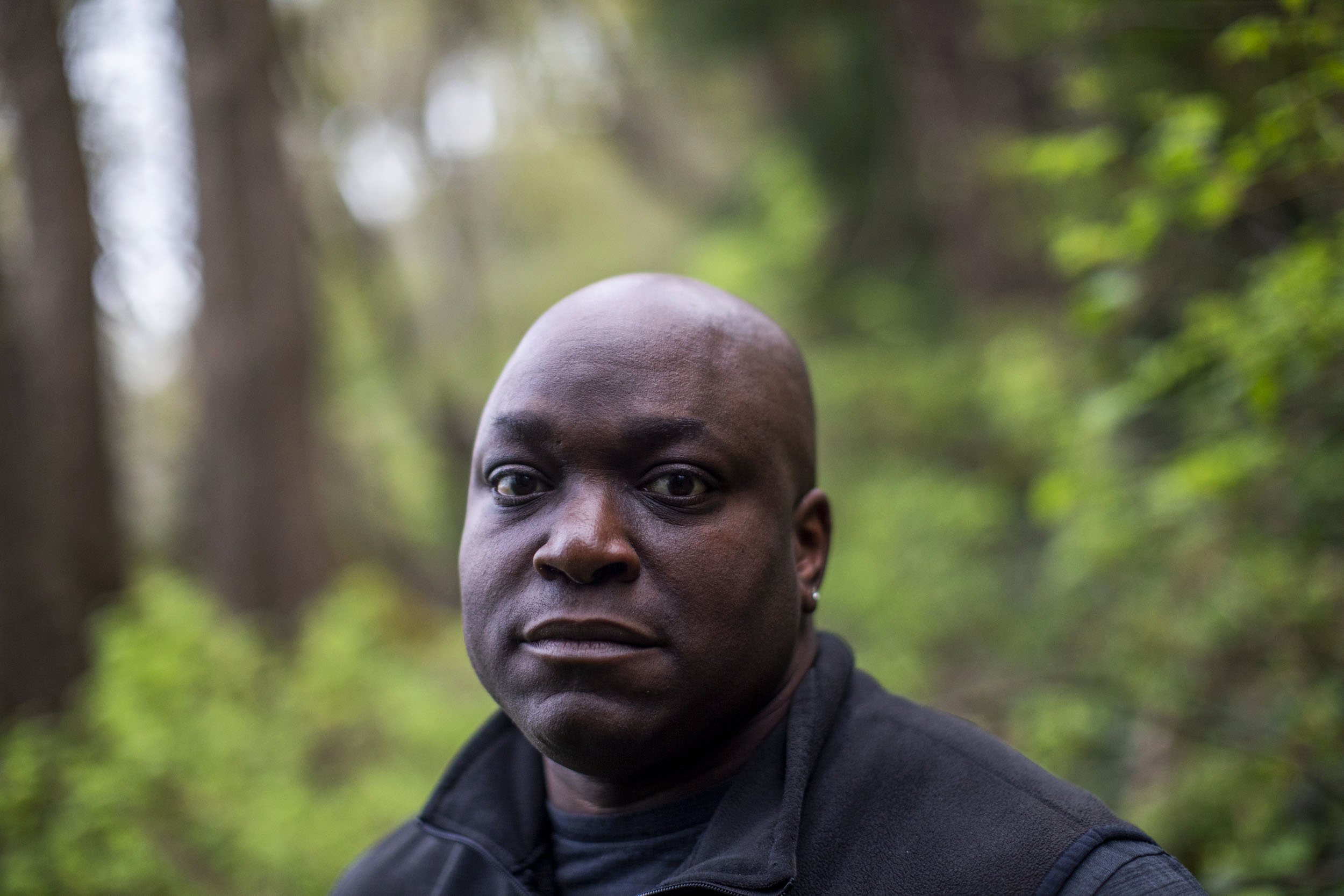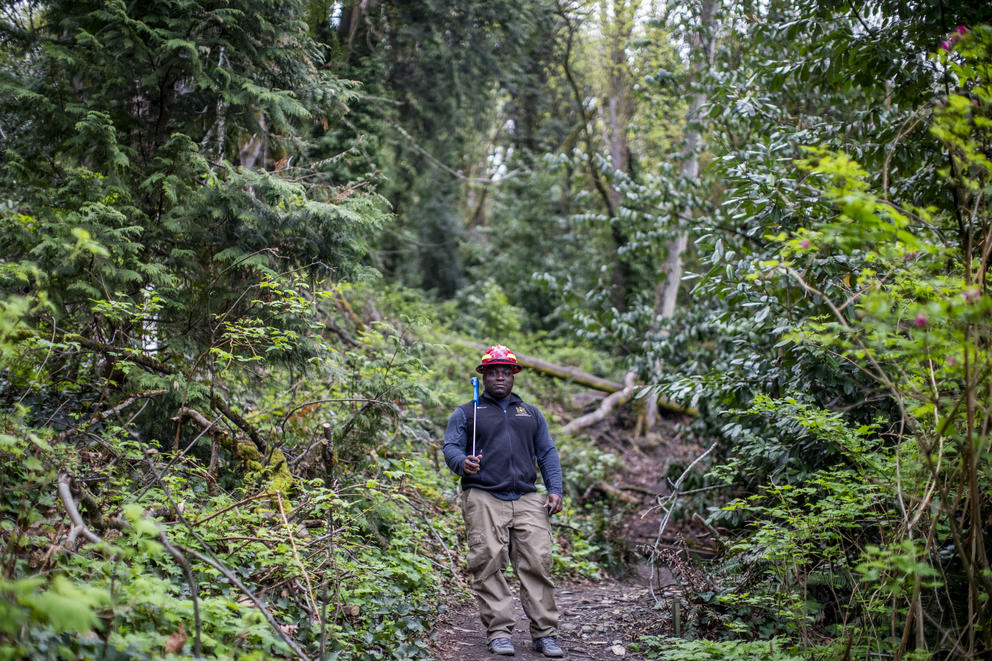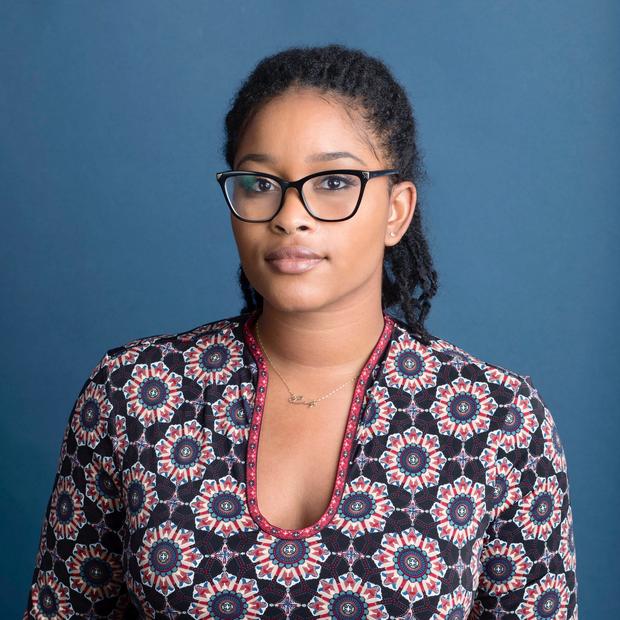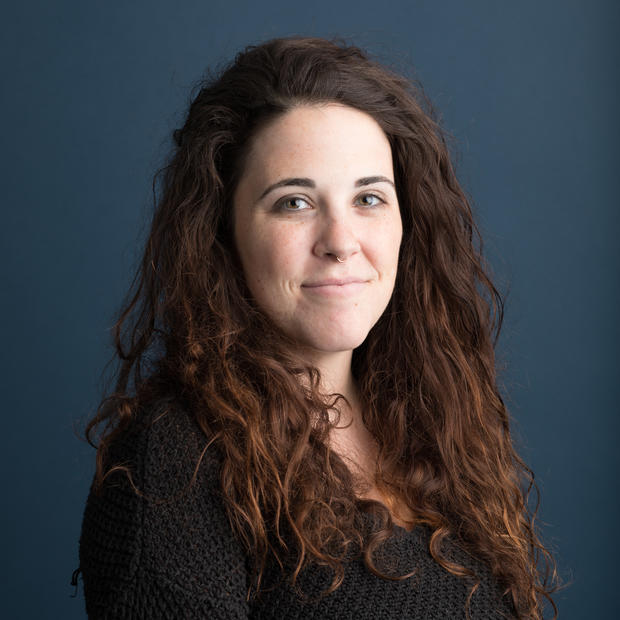This conversation has been lightly edited for clarity.
I grew up in a small, small town in Louisiana called Waterproof. My high school was from seventh grade to 12th grade and had 130 students, so my graduating class was 25. We did not have guidance counselors on campus saying, “You know, you should study because you want to go to college.” When you graduate, you pick one of the armed forces: So you go to the Air Force, Navy, Marines and all that stuff.
My goal was to go to the Marines. Fortunately, I did not go. My aunt said I should think about college. And I said, “Well, why would I go to college?” Especially when I really did not like high school. But I took her advice. I went to undergrad in Baton Rouge at Southern

University. I showed up on campus and I did not have a major. But someone told me that there's a new program in the back of campus called urban forestry and they were looking for students.
I go and I was introduced to a U.S. Forest Service liaison officer who was stationed on campus to assist students in getting summer internships with the Forest Service. So they told me about a four-year program and said, “We will give you funding based on your GPA.” I worked hard to keep my GPA up high, and I ended up taking my first summer internship with the government and it was in Prospect, Ore. So one summer night in 1993 or 1992, I got on the Greyhound bus from Baton Rouge, Louisiana. Three days later, I was in Medford, Oregon. And then I had a friend to pick me up and he took me to Prospect. That was my introduction to the Forest Service.
In Prospect, there are not that many people that have a tan like you and I. At first I was like, “I don't know…” because I went to school at Southern University; it’s one the largest historically Black colleges.
Now I work at the Pacific Northwest Research Station here in Seattle. I’m also an affiliate professor at the University of Washington. It wasn't like I was in high school and I said, “OK, I want to become a research fire scientist”— that’s not the case. I think if I tried to plan it, I would not be here.
Some of my [family members] understand what I’ve accomplished, but they don't really understand what I do. One thing they know is I was in school for a long time. Some want to know why I was in school for so long, but it's hard to explain because I am the only person in my family to graduate from college. My aunt started college at Southern to be a nurse and then I think my uncle started at Grambling [State University] — that's our rival school — but he didn't finish.
I always give a lot of presentations at elementary schools and high schools. The elementary students, they can always relate to this slide here where I have a block of wood and Legos. What I try to show is that the block of wood is our national forests, and then the Legos represent a community. And then I drill holes in the block of wood and insert matches, and then that becomes your forest. The idea is because we've suppressed wildfires, we have a lot of trees and dry forests. So when you have a lot of trees next to a community, you have big fires. And usually those fires would end up burning into the communities like we had in California last year.
Morris Johnson, a research fire scientist with the U.S. Forest Service, in Seattle on April 16. Johnson has been with the Forest Service for 24 years and says that his favorite part of his work is going to active wildfire scenes and helping forest managers understand how field treatments change fire behavior. (Photo by Dorothy Edwards/Crosscut)
What I do is I use computer simulation models to look at what [would happen] if we did a particular treatment where we take out 20 or 40 of those matches, or trees. Then the computer model will give me this quantitative number that says this is the change in potential fire hazard. The computer models are just for us to understand what could potentially happen. But in the summertime what I do is thinning treatments of the forests. And we can see that there is then a change in fire behavior.
The managers on the district, their big first decision is: What do we do after the wildfire? Do we try to remove some of the trees in order to take them to basically be sold as timber, or do we leave the trees? There are some folks that support salvage logging — that's what it's called. And then there are some folks that do not support salvage logging. What I want to look at is, what happens if we look at both scenarios? Let's say you have 10,000 acres — a big, big area, right? And all the trees are dead, what's going to happen over time to those dead trees? It becomes a fire hazard. But then the other position is that a lot of those trees are habitat for black-backed woodpeckers or for other critters, or it's going to help return nutrients to the environment.
A couple weeks ago, I was at Southern University because they had invited me to give some talks. They had this fire symposium and there were a lot of students from historically Black colleges. I gave my talk and I said, “My goal is to get you to work in fire because this is exciting. You don't know anything about fire now, but you should at least consider it.”







